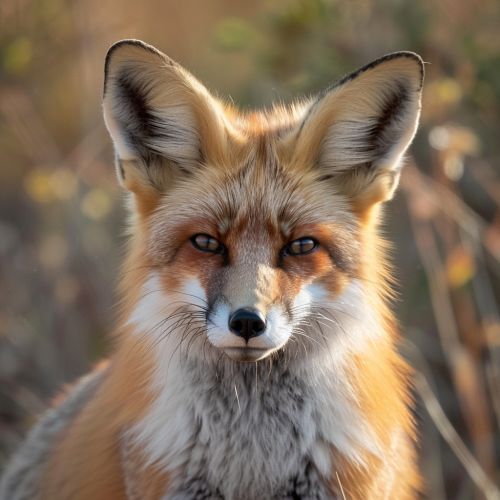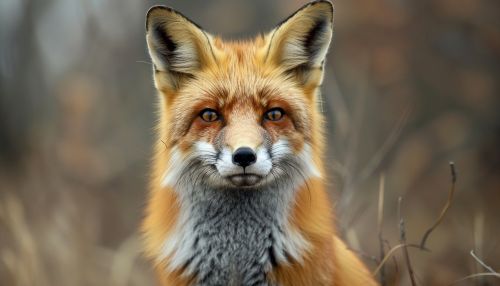Red foxes
Introduction
The red fox (Vulpes vulpes) is the largest of the true foxes and one of the most widely distributed members of the order Carnivora, being present across the entire Northern Hemisphere from the Arctic Circle to North Africa, North America and Eurasia. It is listed as least concern by the IUCN due to its widespread range and abundance in many areas.


Taxonomy and Evolution
The red fox is classified as Vulpes vulpes within the family Canidae and is a part of the order Carnivora. The species name vulpes is Latin for "fox". The red fox is one of 37 species in the genus Vulpes. The red fox's closest relatives are the raccoon dog, the swift fox, and the Arctic fox.
Physical Characteristics
Red foxes are known for their long bushy tails and distinctive red fur. They have a pointed snout and large, upright ears. The red fox's tail, known as a brush, is long, fluffy and is often tipped with white. The red fox is a medium-sized canid, with adults typically weighing between 4.1–14.7 kg (9.0–32.4 lb).
Distribution and Habitat
Red foxes are highly adaptable and occupy territories in deserts and tundra as well as urban areas. They are found throughout the Northern Hemisphere, including North America, Europe, Asia, and North Africa. In North America, red foxes are found throughout the continental U.S. and Canada, excluding parts of the southwestern United States. In Europe, they are widespread except in Iceland.
Behavior and Ecology
Red foxes are solitary hunters who feed on rodents, rabbits, birds, and other small game. They are also known to eat fruits and vegetables, fish, frogs, and even worms. Foxes are nocturnal, but it's not uncommon to see them out in the day. They are known for their intelligence and cunning nature.
Reproduction
Red foxes are monogamous animals that mate for life with one partner. The breeding season for red foxes typically begins in January and lasts until March. After a gestation period of 49–58 days, the vixen (female fox) gives birth to a litter of 1–10 kits. The kits are born blind and do not open their eyes until they are about 9 days old.
Interaction with Humans
Red foxes have been hunted by humans for their fur and for sport for centuries. They have also been kept as pets, although they are not domesticated and require special care and attention. In some areas, red foxes are considered pests because they prey on livestock, particularly chickens and rabbits.
Conservation Status
The red fox is listed as least concern by the IUCN due to its widespread range and abundance in many areas. However, populations in some areas are threatened by habitat loss and hunting.
